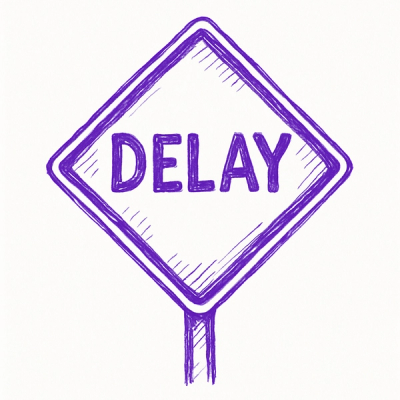
Research
/Security News
Popular Tinycolor npm Package Compromised in Supply Chain Attack Affecting 40+ Packages
Malicious update to @ctrl/tinycolor on npm is part of a supply-chain attack hitting 40+ packages across maintainers
termicod is a python module for printing text in any colour or style in the terminal. termicod also supports progress bars as an extra feature, enabeling you to create your own CLIs. Fonts and other things are (hopefully) going to be added in the future.
In order to create coloured text, you have to use the makecolour(...) function. In order to use this, you have to give it the text that you would like to colorise, and the colours/styles that you would like to apply to it. You may add as many as you want. A few examples are shown below:
>>> print(termicod.makecolour('Hello, world!', fgcolours['blue']))
This will print "Hello, world!" out in the shell in blue.
>>> print(termicod.makecolour(' Warning!! ', styles['highlight-warn'], styles['blink'], styles['bold']))
This will show a blinking "Warning!!" in the terminal.
>>> print(termicod.makecolour('Bold', 1))
This example uses the numbers shown in the data dictionarys directly. "1" can be found in the styles dictionary. It makes any text go bold.
>>> print(termicod.makecolour('Brass', 1, 2, 3))
This will show the word "Brass" in bold italic green.
Scroll down to the bottom for the colouring option datasets.
It is actually pretty simple to create a progress bar using termifish. All you need to do is call the progress(...) function and pass in an iterator. This is all implemented in a for <x> in <y> loop, rather like this:
import termifish
stuff = [...]
for item in termifish.progress(stuff):
print('Doing Stuff... ', item) # Do Stuff
The progress bar produced looks like this:
Progress: |████████--| 80.0% Complete
Note that the bar shown above has been durasticly shortened.
The standard length is 100 blocks long.
NOTE: Please See Credits
It is possible to change the progress symbols, ect. using the keyword arguments of the progress(...) function. The options for the function are shown below:
endcolour is a keyword argument for the makecolour(...) function. It specifies the colour to return to when the coloured text has ended. The default is black. This is defined in the _backend = {...} dictionary as "end".
clearscreen(...)This function clears the terminal window. It uses os.system(...), and uses a different command depending on the operating system (cls is for windows, while everything else uses clear).
outlog/errlog/inplog(...)These functions are designed to be quick and easy shortcuts for printing to sys.stderr, sys.stdout and sys.stdin. The pass any arguments or keyword arguments on to print(...) (or input(...)), and they only only affect the file keyword argument.
fgcolours = {...}
# Grey-Scale
'black': 30,
'grey': 90,
'white': 97,
'dim-white': 37,
# Standards
'red': 31,
'green': 32,
'yellow': 93,
'orange': 33,
'blue': 34,
'pink': 35,
'aqua': 96,
# Light Variants
'light-blue': 36,
# Bright Variants
'bright-red': 91,
'bright-green': 92,
'bright-blue': 94,
'bright-pink': 95
bgcolours = {...}
# Grey-Scale
'black': 40,
'grey': 100,
'white': 107,
'dim-white': 47,
# Standards
'red': 41,
'green': 42,
'yellow': 103,
'orange': 43,
'blue': 44,
'pink': 45,
'aqua': 106,
# Light Variants
'light-blue': 46,
# Bright-Variants
'bright-red': 101,
'bright-green': 102,
'bight-blue': 104,
'bright-pink': 105,
styles = {...}
# Plain
'standard': 0,
'plain': 6,
'bare': 9,
# Standard
'bold': 1,
'italic': 3,
'underline': 4,
# Coloured
'success': 2,
'highlight-warn': 7,
# Animated
'blink': 5,
# Other
'invisible': 8
Features that may be implimented in the future are:
unitrees).It's the first release! [1.0.0]
The credits for 99.99999% of the progress(...) function go to:
Diogo and Greenstick on StackOverflow.com
Their question awnser can be found here:
https://stackoverflow.com/questions/3173320/text-progress-bar-in-terminal-with-block-characters
The author of this module did not ask the question.
Author:
Pigeon Nation!! :]
FAQs
Renders Progress Bars & Coloured Text In The Terminal!!
We found that termicod demonstrated a healthy version release cadence and project activity because the last version was released less than a year ago. It has 1 open source maintainer collaborating on the project.
Did you know?

Socket for GitHub automatically highlights issues in each pull request and monitors the health of all your open source dependencies. Discover the contents of your packages and block harmful activity before you install or update your dependencies.

Research
/Security News
Malicious update to @ctrl/tinycolor on npm is part of a supply-chain attack hitting 40+ packages across maintainers

Security News
pnpm's new minimumReleaseAge setting delays package updates to prevent supply chain attacks, with other tools like Taze and NCU following suit.

Security News
The Rust Security Response WG is warning of phishing emails from rustfoundation.dev targeting crates.io users.